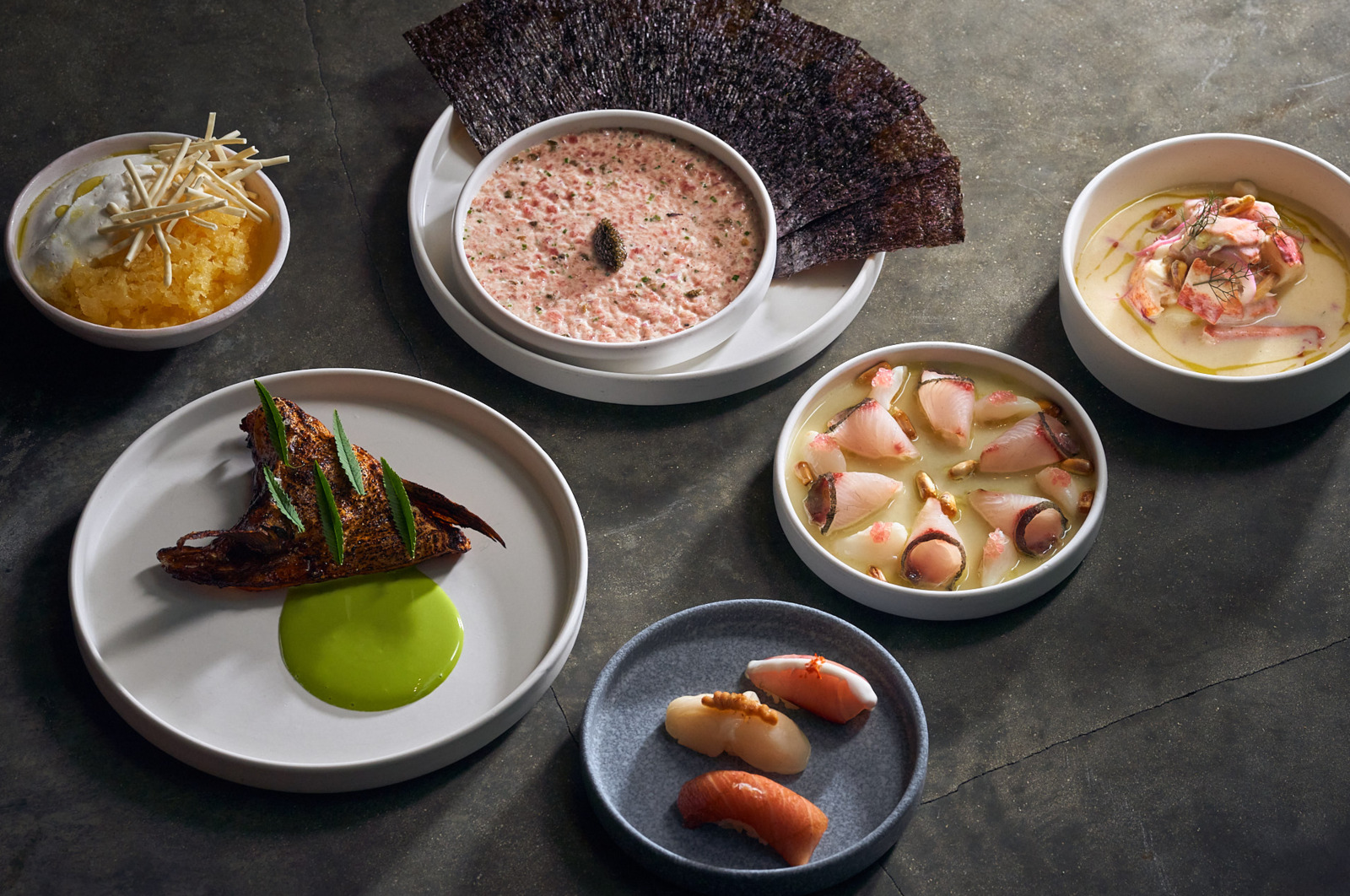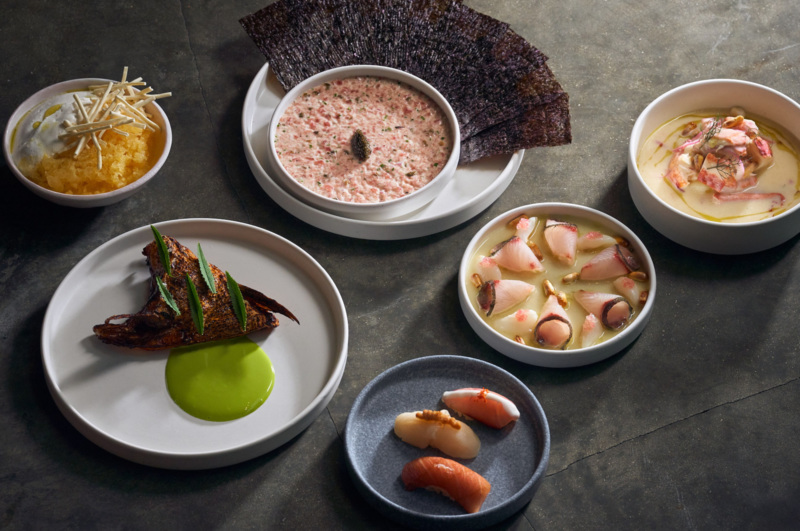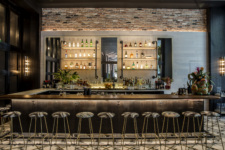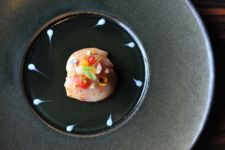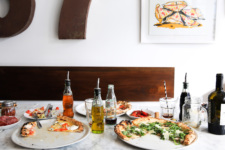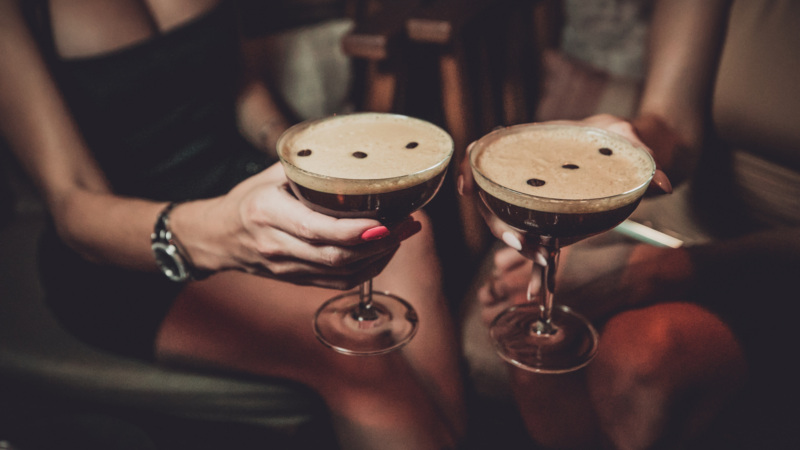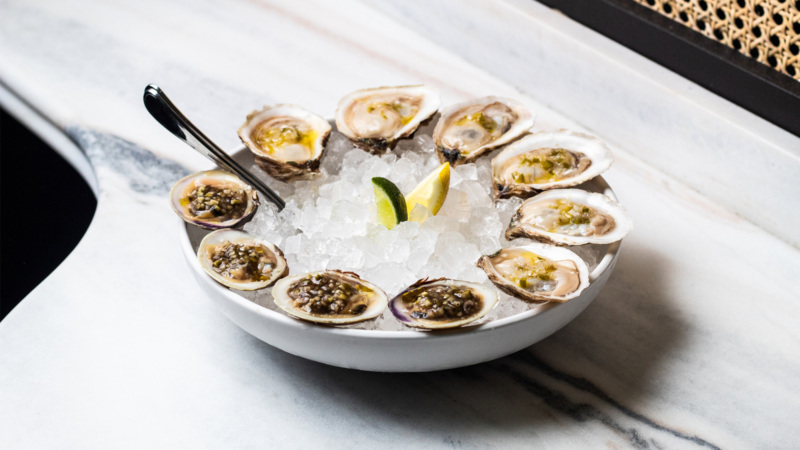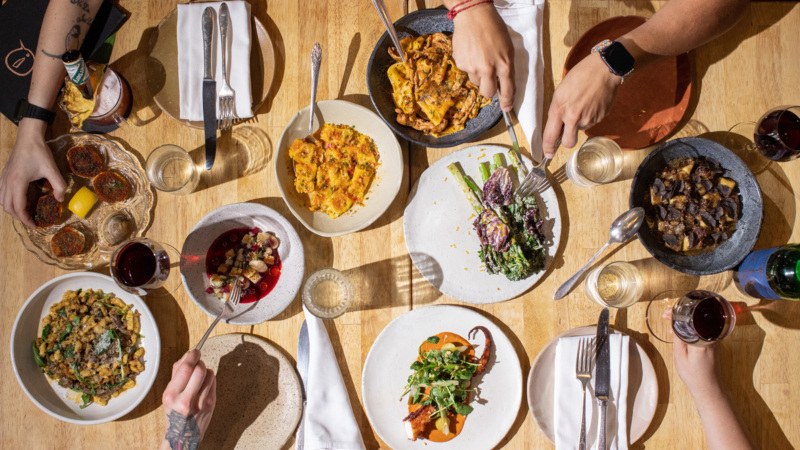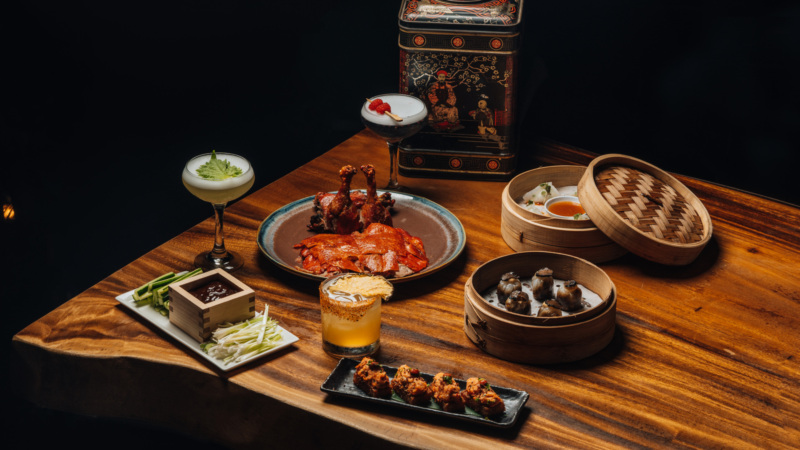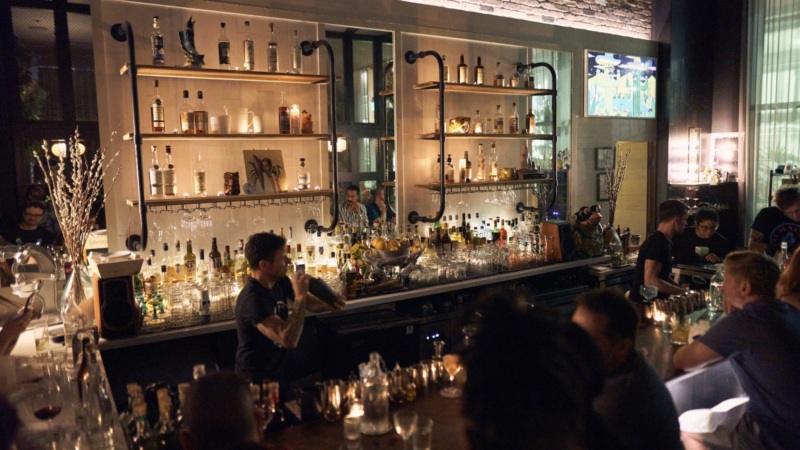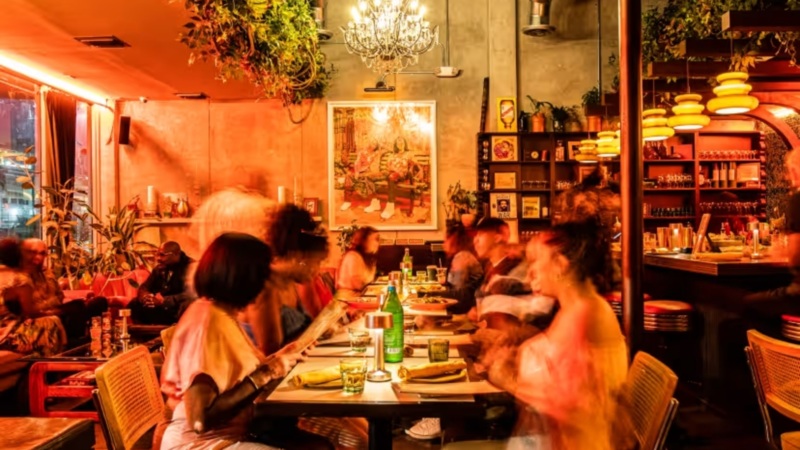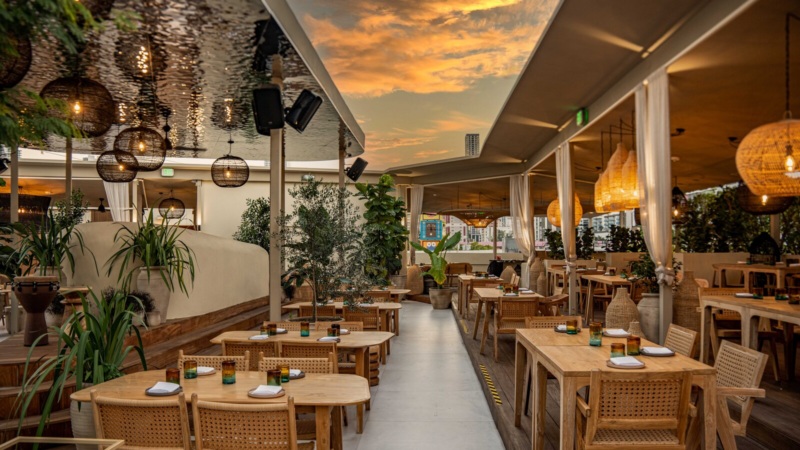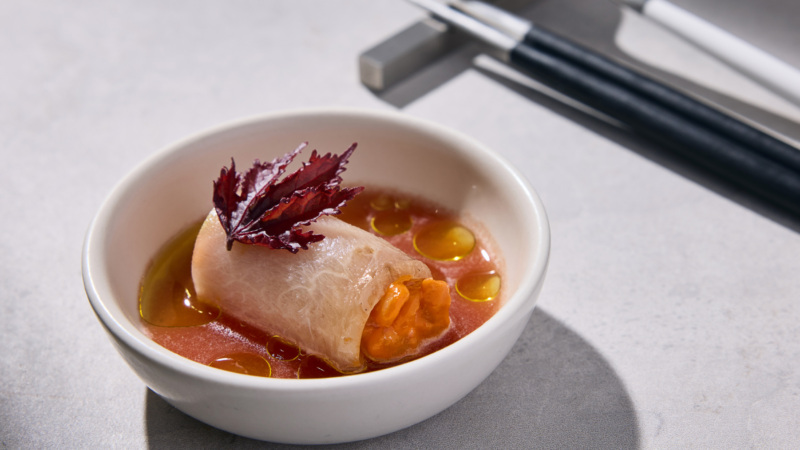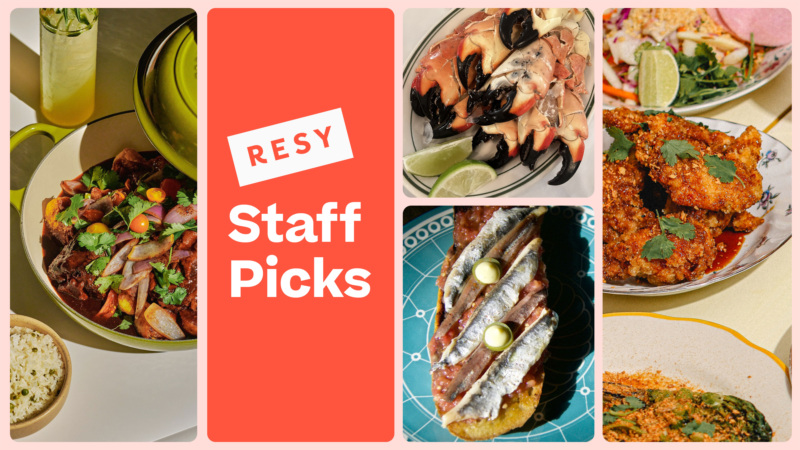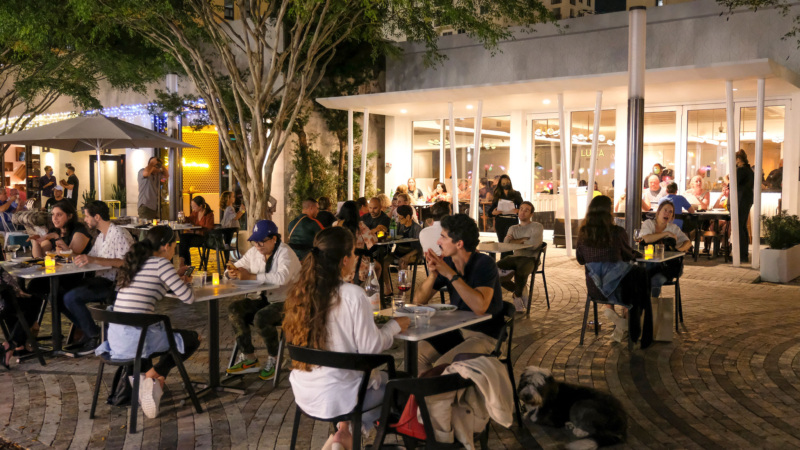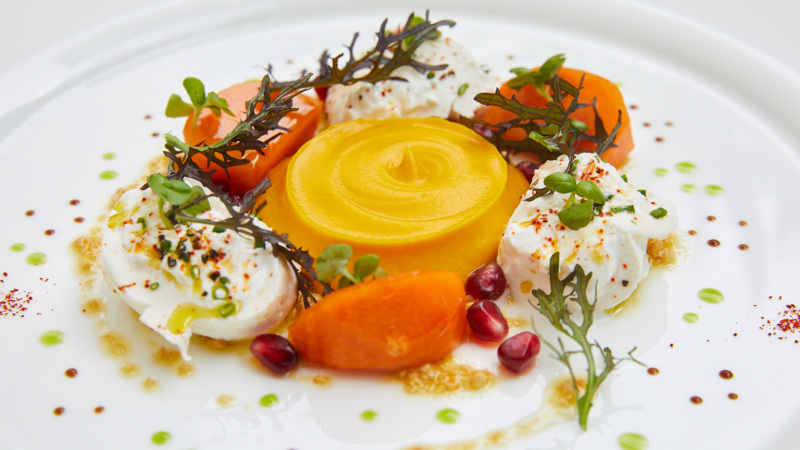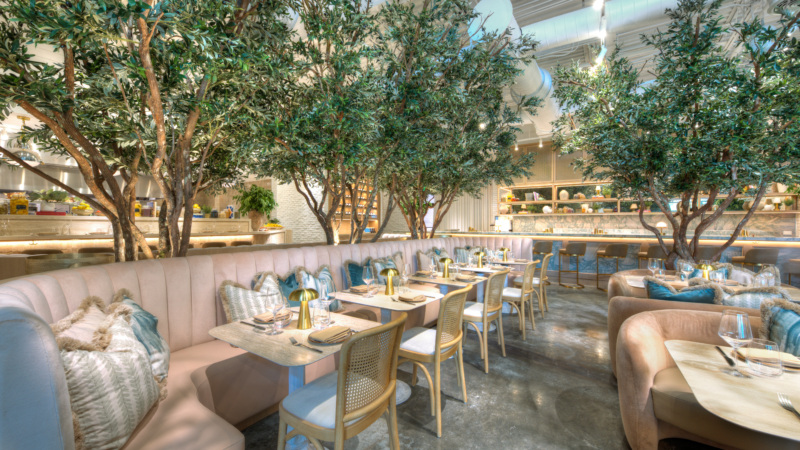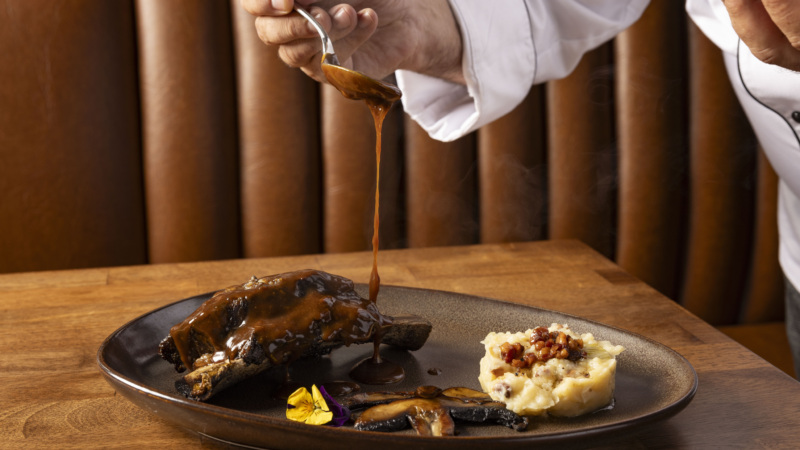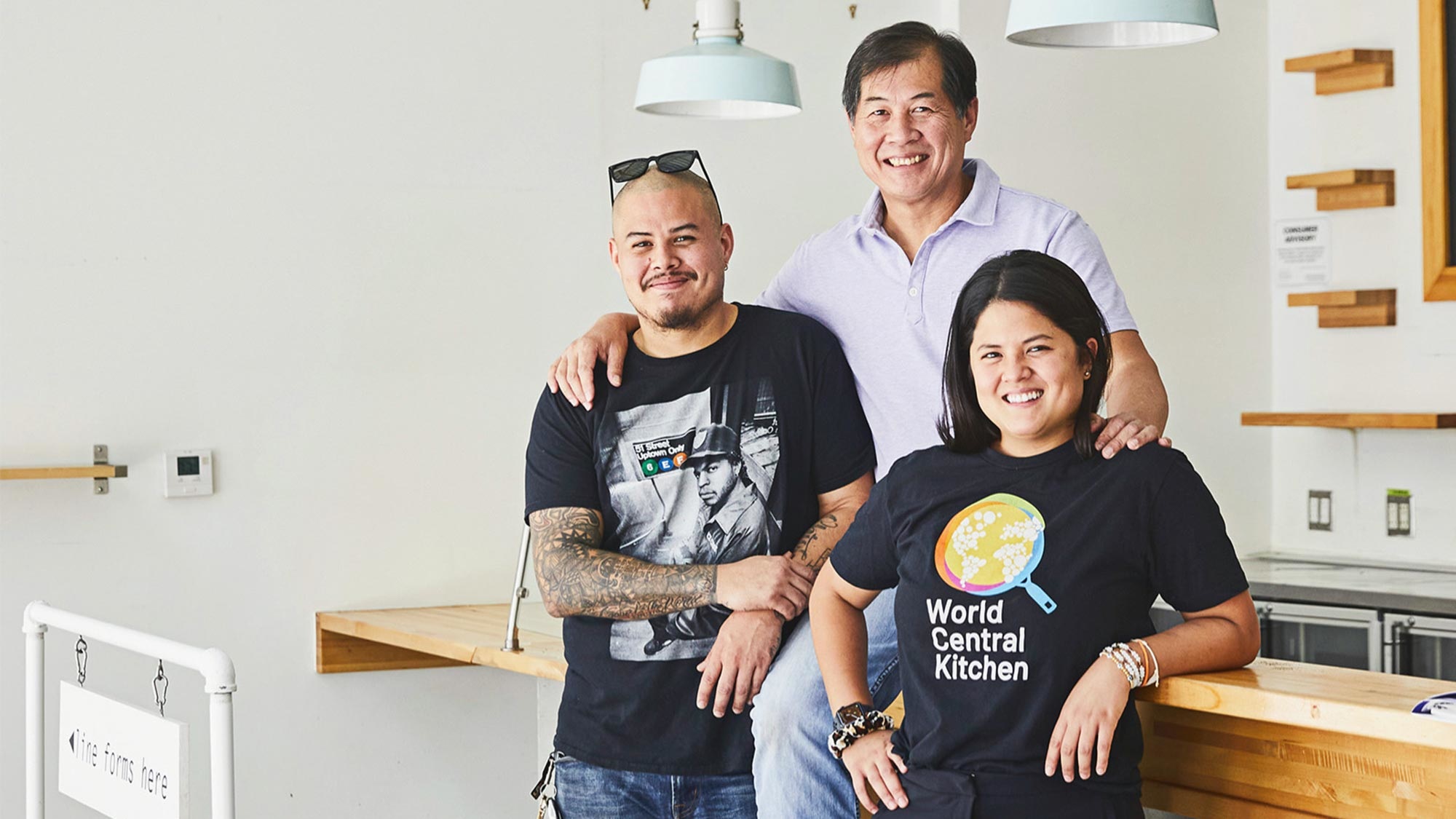
How Itamae’s Nando Chang Makes Nikkei Magic in Miami
Chef Nando Chang puts in 14-hour days at Itamae, starting with the morning’s 8 a.m. fish delivery, to the close of dinner service at the sushi bar. But there was a time when he didn’t want to think about cooking outside of a standard 40-hour work week.
His sights were set on a music career, and even when Itamae first opened, he was able to rely on the rest of the Itamae chef team — executive chef Valerie Chang (Nando’s sister) and sushi chef Fernando Chang (Nando’s father).
It wasn’t until Nando let go of those musical ambitions that he fully embraced his calling as a chef. “It only fueled me to be the best version that I can be for this career that I have now,” he says. Now with renewed focus, Nando finds himself the Chang chef leading Itamae’s continued evolution, as his sister and father take the lead on expansion opportunities.
Itamae started as a small food hall stand meant to be run by Fernando (affectionately known as “Papa Chang” by his customers), but it quickly became a family affair with Valerie and Nando by his side. In the midst of the pandemic, the Itamae team opened their own restaurant space nearby in the Design District — just downstairs from their original location. Now four years in, Itamae’s current iteration has been named to almost every “Miami’s best restaurants” list — including a New York Times list of best new restaurants, and most recently, recognition from the Michelin Guide.
Their secret to success? Nando believes that people fell in love with their family story, as much as with their take on Nikkei cuisine. The father-daughter-son team hails from Peru, and at Itamae, the brick-and-mortar, they artfully fuse Japanese culinary techniques with Peruvian ingredients, the essence of Nikkei cooking. Think sushi and ceviches with flavors from Peruvian aji peppers and Japanese citrus.
The Itamae team has also expanded, with new ventures overseen by Valerie and Fernando: B-Side Sushi in Wynwood and venues at the FTX Arena, an Itamae sushi bar, and a fast-casual Peruvian cart called Raya. Meanwhile, Nando has stepped up to take the lead at Itamae, where he envisions a future of omakase-style dining and new hot dishes to complement the cold sushi and ceviche plates.
We sat down with Nando to learn more about the Chang Gang’s family story, transitioning from a food hall stand to a full-service restaurant, and what’s next for the ever-evolving Itamae.
Note: This interview has been edited for length and clarity.
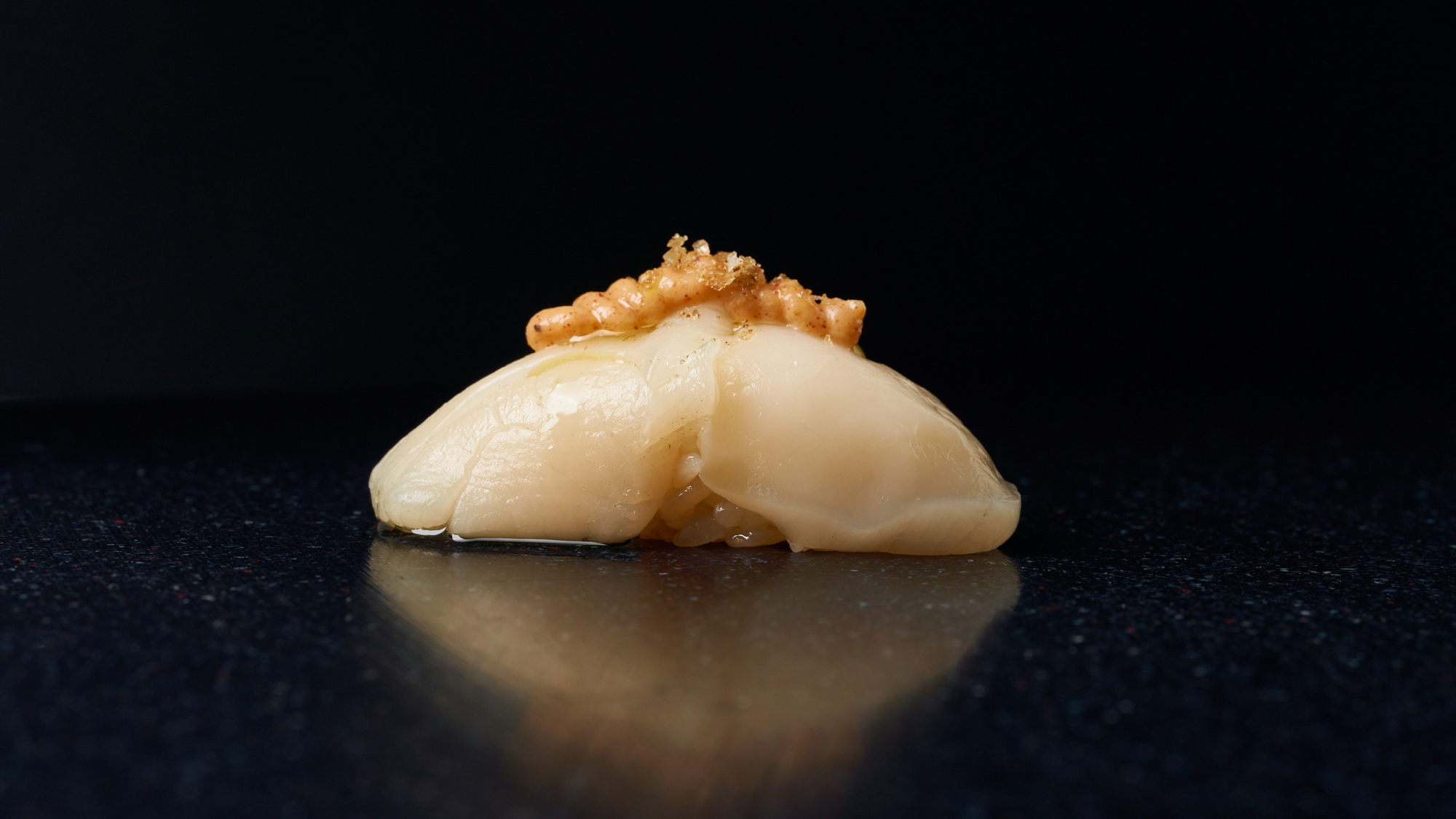
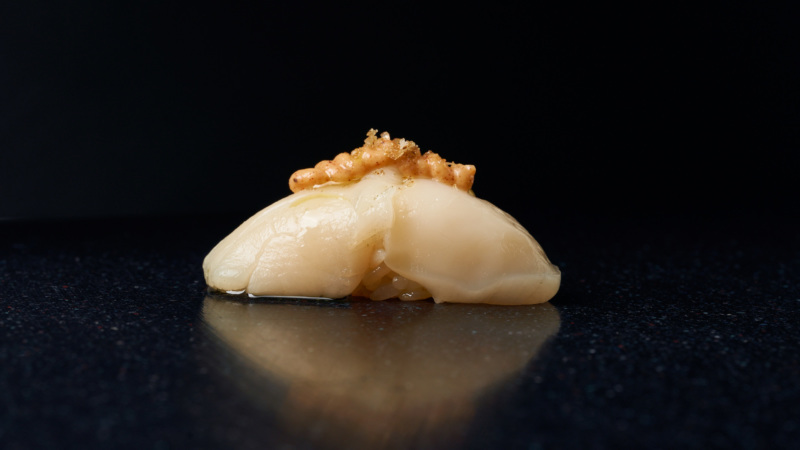
Resy: How would you describe Itamae’s approach to Nikkei cuisine? How much of it is inspired by your Peruvian roots, and how much of it breaks away from tradition?
Nando Chang: So there’s five partners at Itamae, and all five of us have a different version of Itamae in our heads, so you would have to ask every one of us. But for me, Itamae is like a high-end cevichería.
Cevicherías are ceviche restaurants and bars in Peru that specialize in ceviche. Every region of Peru makes a different style of ceviche. Before Japanese people got to Peru, ceviche was usually served marinated for hours and cured, and it wasn’t served raw. That’s what Japanese people taught us – how to handle and use sashimi in our dishes. Japanese people who immigrated to Peru wanted to open businesses that resembled what they were doing in Japan, but now with Peruvian products. For me, that is what Itamae is.
We have a sushi program because my dad, being a sushi chef, taught us sushi. So, it’s a big part of our DNA.
I believe our version of Peruvian food is very, very different from a lot of restaurants in the U.S. Everywhere we travel where there’s Peruvian food, we eat it. We know what other places are doing, so we know what we should do that’s not the same, per se.
Between you, your sister Valerie, and your father Fernando, can you tell me about the role each of you play at Itamae, and what each person’s culinary superpower is?
Chang: Well, my sister is the best cook out of all of us, for sure. Val’s role in this company has always been to be our “creative chef,” [but] I would say Val is our executive chef. From the first day of Itamae, she was already changing my dad’s menu. Val has always helped with organizing, the structure of the kitchens, and hot food. She takes on a lot.
My father was our sushi chef when we first started, but now he’s transitioning more into what he is: the business owner. He oversees the four restaurants and operations… between Itamae, Raya, Itamae at the Bacardi Ocho Lounge, [the sushi bar in the basketball arena], and then B-Side Sushi. He also finds time to make sushi at the arena during home games and concerts.
My role has always really been executive sushi chef. I make decisions and create for the sushi bar.
That’s how we’ve separated our duties, and how we’ve been able to thrive without stepping on each other’s toes. Everybody’s creative, and everybody wants some type of control over the way they express themselves. We’ve had to find our balance over time. As we’ve evolved, we’ve defined our roles much better.
Can you tell me more about your relationship with your sister and father? What spoke to you about getting into sushi and following in your father’s footsteps?
Chang: My relationship with my sister has always been very close. Both of our parents left Peru [for the U.S.] when we were young and there was a gap of about 10 years when we didn’t really live with our parents. So that decade, Val and I became very, very close. As we’ve gotten older, that chemistry has never gone away.
In the kitchen our relationship is a little different. We’ve bumped heads, like any pair of chefs would bump heads in a kitchen, but we’ve learned to share over time. Even as she’s transitioned out of Itamae, Val will come in and have lunch once a week and say, “Hey, I thought this dish needed this [or] that.” And that’s very much our relationship still.
Dad is our best friend. He would always tell us, if you learn to make sushi early enough, you’ll make more money than the other 16-, 17-, 18-year-olds. He knew it was a high-demand role and not a lot of people could do the job, so if he taught us early enough, it would help us. And it did.
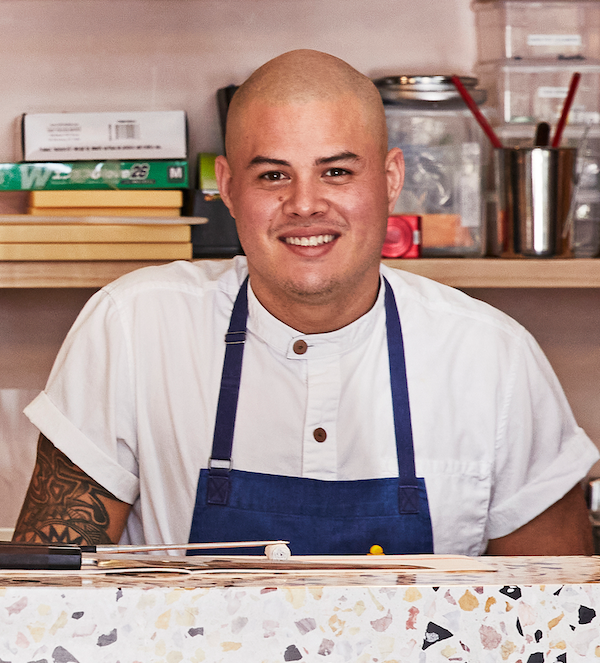

What was it like transitioning from the food hall stand to opening a stand-alone restaurant, and how has Itamae evolved over time?
We’ve evolved so much since we opened the food stall. It’s the chemistry of whoever’s in the kitchen. When Val, my dad, and I were cooking together, the menu was very different. When we reopened in 2020 [in our dedicated restaurant space], we had a totally different team that hadn’t ever worked with us in the food hall, so it was another variation of Itamae. Now we’re a year and a half into this reopening, and we know exactly what we want.
The biggest change in Itamae from then to now is the finances. The version of Itamae that we had in the food hall was a version completely restricted to a very slim margin of error. It restricted us in every way creatively, but also in terms of the support we needed in that kitchen. We shared one communal kitchen with 11 or 12 restaurants, so that was really, really tough. Once we came down to our new dedicated restaurant space, things changed right away. We were able to have a full team of people, prep things on our own, and have control. That elevated our restaurant right away.
At this location, you have outdoor seating in the Design District’s Palm Court and a few seats indoors at the counter. What’s the experience like for someone dining at the chef’s counter?
We embellish the experience by sending a bunch of small versions of dishes to complement whatever the person’s ordering. The idea really is to make it an omakase at some point. If you order, let’s say, a ceviche and a tiradito, we’ll give you something to balance out two acidic dishes. So maybe we’ll send the potatoes — a lot of people don’t realize how good they are — and we might enhance them with a bit of caviar, for example.
What does a typical day at work look like for you?
I’ll get here around 8 a.m., and the fish usually comes in around 8:15 a.m. or 8:30 a.m. Then I’ll start breaking down the fish. Everything that comes in that day goes into the dry-ager — at least a day or two on most white fishes, which are called shiromi. We use a lot of seasonal Japanese white fish on our menu. Then we’ll grab fish from the ager and start preparing for service, breaking down the fish until 11 a.m.
Then the kitchen will have breakfast, and I’ll sit down with my chef de partie, or the people in charge of the ceviche station or the sushi bar, and we’ll go over the menu. Our menu changes quite often — sometimes completely different variations of certain dishes. Sometimes it can be the same dish, but we just changed the pepper on a leche. It’ll be the same tiradito, but you’ll have a different leche, maybe some fruit that’s seasonal, things like that.
By 11:30 a.m., we’re having pre-shift, and at 12 p.m., I’m at the counter from around noon to 3:30 p.m. I enjoy service a lot, making food and also teaching the sushi helpers. Around 3 p.m., we start prepping for dinner, have a staff meal at 4 p.m., and reset the stations for dinner. By 5:30 p.m., we’re opening for dinner, then at 7 p.m. we go through another rush. By 10 p.m. I’m usually out of there, then the guys clean up and we’re back again the next day.
That’s a full day of dedication. Are you still also making music?
The Japanese refer to this as a way of life called shokunin. A shokunin is basically somebody who invests their life in the pursuit of perfection of one thing — someone who gets up every day and does the same thing, over and over, on the journey to make it better every day.
When I was making music, I would dedicate myself [in the kitchen] maybe about 40 hours. And then after those 40 hours, once I left the restaurant, I didn’t want to open a book about a kitchen, I didn’t want to watch a documentary about a kitchen. Once I stopped pursuing music, it made me a lot more intensely focused on food — and maybe as intense as I never got with my music. I started dedicating twice as much time in the kitchen as before. And then I just fell in love with it more and more.
Sushi is about practice. Fish is not something you can just read about. Every fish is so different — you have to eat it, you have to try it, you have to really work with the animal over and over. I had to seek focus, choose this career, but choose it from a happiness standpoint. I like how I make my guests feel when I do this.


Itamae has been recognized with numerous awards, even when it was at the food hall: James Beard semifinalists, New York Times’ Best New Restaurants, now a Bib Gourmand. How does it feel to run a restaurant that the wider culinary community has responded to so enthusiastically?
When I speak about family — it’s not just my dad and Val. The biggest satisfaction is that we did this with the three families [of partners] that really got involved right away — the Saltzmans, the Moraleses, and the Changs. That hasn’t changed, no matter what this restaurant or group has evolved into.
The first year was a hard struggle, because when you have five partners in a 100-square-foot stall space, it was hard to even pay ourselves the proper wages and also hire other people. Little by little, it’s worked out. Our vision for the business has only gotten clearer. I think that’s always been my biggest satisfaction, seeing my Itamae family succeed.
As much as I love our food and we push that forward, I also believe that the support from our community really comes because people love our story. People saw us from day one trying to push this little cart. We’ve grown, and are very much a Miami product. And I just don’t brush that to the side.
It’s not just about our food and service, because before we could provide you any kind of service [at the restaurant], it was still the same love upstairs [in the food hall]. Somehow good writers would come, good chefs would come up and have a meal in front of a food stall. I’ve always been amazed at how many people enjoyed just interacting with my dad when we were upstairs. I was astounded at how many people would walk by and say, “Hey, Papa Chang!” I think that support was very important for us. Grassroots, you know. People really saw us there as a family.
I do believe that people have been willing to give us love, because of who we are as people more than who we are just as a restaurant. And that’s always been very clear.
What’s next for Itamae and the Chang Gang?
Chang: Itamae is constantly changing. I think my dad started the menu with, like, tuna tataki and California rolls. All the maki rolls are now on the menu at our sister restaurant, B-Side Sushi, and we’ve now elevated our sushi program at Itamae by focusing on nigiri. The idea with nigiri is for our guests to be able to have five, six different pieces, which are totally different in flavor profiles, instead of having one roll that may fill you up and you don’t really get to try other things.
We still want to change our menu a little bit. We want to add hot dishes; we’re going to try to implement a hot kitchen in the next couple of months… maybe a grill. By the time that comes in, the menu is going to change again, where people will be like, “Well, where did these dishes go and what are these new things?” But that’s always what Itamae has been — it’s constant change.
The idea is to have a fully built-out restaurant at some point. But for now, we’ll keep growing, slowly but steadily.
